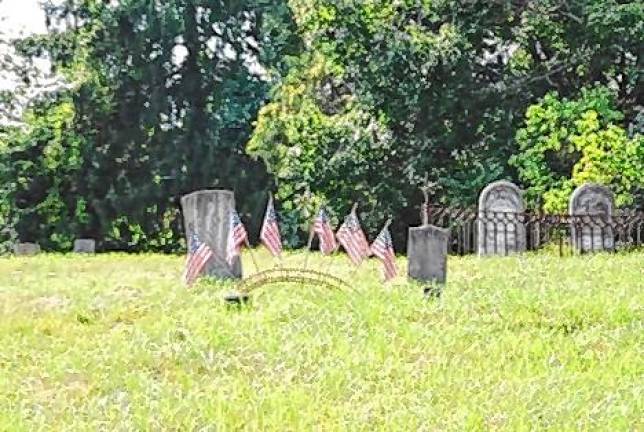
Today is offered a wonderful writing from guest historian Rich Vohden of Green Township.
Rich is a good friend and an astute historian, and he brings expertise on the southern part of Sussex County.
There are several great aspects to this writing about a graveyard near his house. For one, it is written in his captivating first-person way and speaks of discovery and action taken to gain information about his finding of the cemetery as well as how he was able to get it into good repair.
In the early ’80s, there was a well-worn path through the wooded area at the corner of Sutton and Pequest roads in Green Township.
The path was used by trout fisherman to get downstream on the Pequest River.
This was across the road from my house, and I was headed downstream on the path one day to hunt wild mushrooms when I spotted a gravestone in the undergrowth.
I forgot about the mushrooms and spent the afternoon discovering more gravestones. I was hooked.
I asked around the neighborhood about the gravestones and learned a lot from Bill Morris, who was born in 1913 and grew up in the historic Wolverton House in Huntsville, and Walter Smith, who was born in 1899 and was raised in the house between the burial ground and the river.
They provided a wealth of historic information on Huntsville and the gravestones.
I learned that graveyards and cemeteries are affiliated with a church; Huntsville has never had a church of its own; therefore, this is the Huntsville Burial Ground.
From the county library, I found: “The oldest grave to be found there now bears the date 1780 and stands in remembrance of a member of the Buchner family. The burial ground was doubtless laid out years before the commencement of the Revolutionary War for there were settlers in that vicinity about 1750.”
I checked around about the ownership and status of the burial ground and determined that there is not an owner of record for the land and it is tax-exempt.
I researched the tax records and county deeds (with the help of Dick Stevens) and discovered that the land was originally overseen by a group of five trustees and their predecessors, who managed and maintained the burying grounds until the last trustee, Harvey Smith, a blacksmith and the father of Walter Smith, passed away at a very old age in 1957. Until his death, Harvey maintained the grounds with a sickle and scythe.
The cemetery is located on a raised area, which in earlier times must have provided a beautiful view of the river and surrounding area. I can almost picture the views before the cutoff was built. There are many photos at the Sussex County library showing vistas of this area.
There were not many wooded areas left. The trees were used for lumber for homes, barns and other buildings; for heating the homes; for building fences; for heating the lime kilns; for making tools, wagons and other farm equipment; and probably even for making wood coffins used for burials in the cemetery.
Most of the tillable land had been cleared to grow crops. Most of the rest of the land was cleared for pasture with a few trees left standing for shade for the pastured animals. I guess the farmers, too, needed a little shade once in a while after walking behind a horse and plow for what was probably a sunup-to-sundown day.
Without the cutoff and without the wooded areas, I can picture a view from the burying ground that would probably allow you to see the Allamuchy Mountains, including the Panther Valley area, the cleared rolling hills in every direction and a clear view down the river at least to Tranquility.
It must have been a beautiful spot to stand on a sunny warm day.
The more I learned, the more I became interested. I became obsessed and decided that this was a project I was going to pursue.
Benjamin Franklin said, “To know the character of a community, I need only to visit its cemeteries.”
This is the first of two parts.
Bill Truran, Sussex County’s historian, may be contacted at billt1425@gmail.com